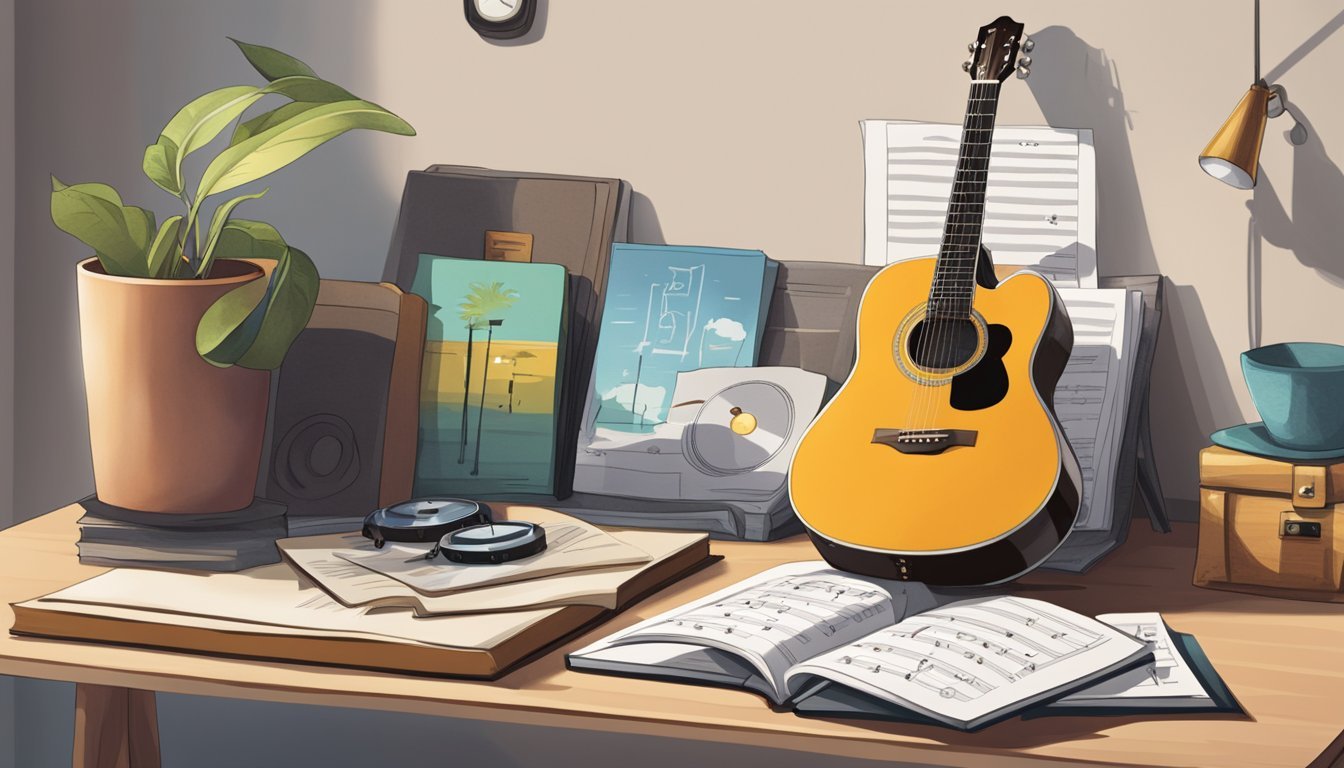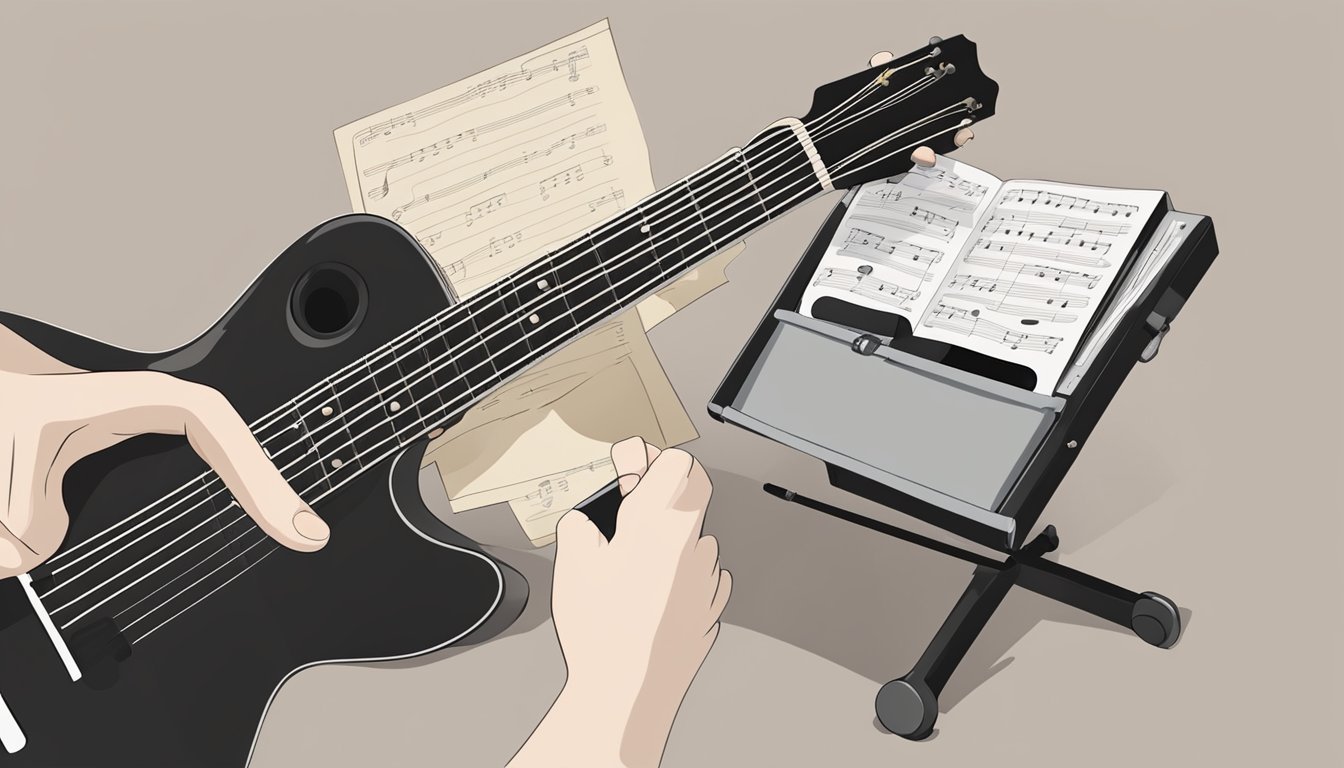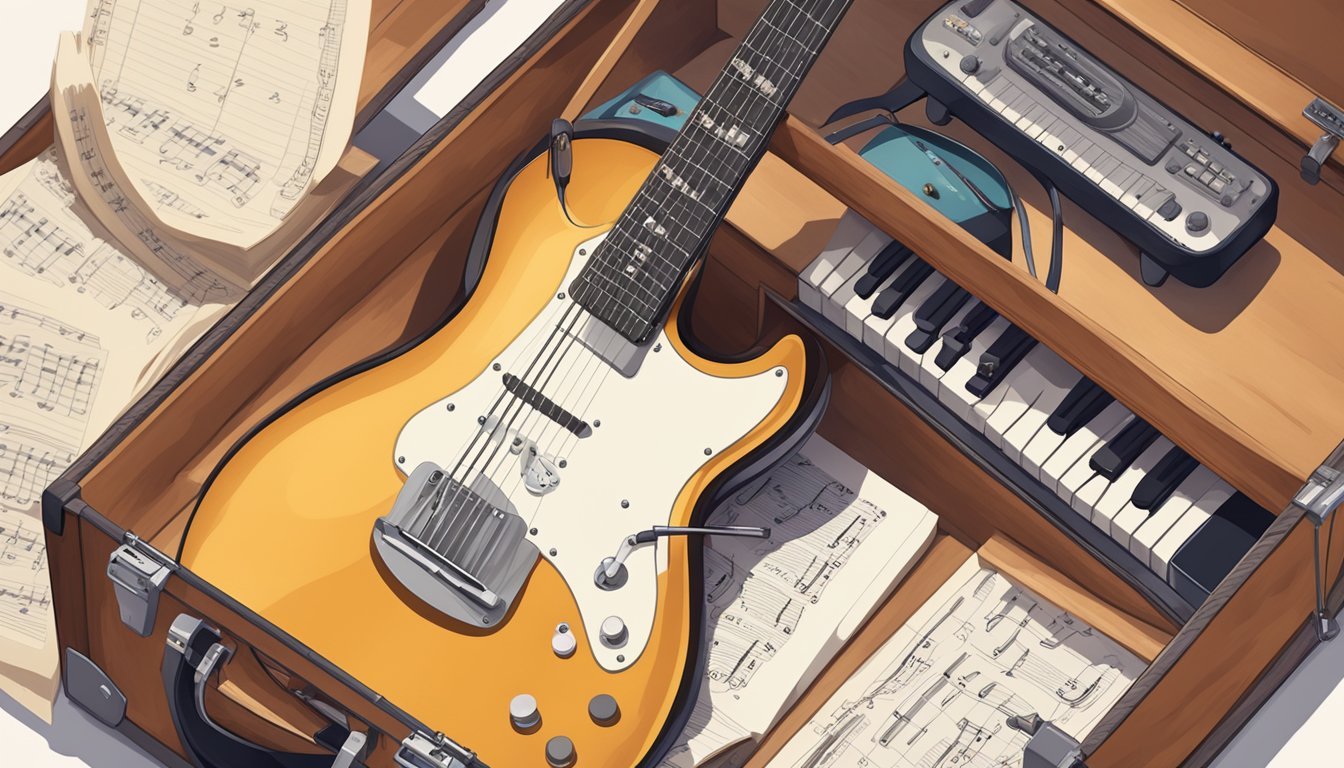Learning to play the guitar can feel like a big task, but it doesn’t have to be overwhelming.
Many find that with a little effort, it can be a fun and rewarding experience.
Whether you’re strumming your favorite songs or creating your own tunes, the journey can be enjoyable and satisfying.

As a beginner, you might wonder about the best way to get started.
It’s important to choose the right guitar for you, set aside regular practice time, and stay motivated by playing music you love.
Remember, consistent practice helps you develop your skills over time, making the learning process smoother.
You may face some challenges along the way, like sore fingers or mastering tough chords.
Many have gone through these hurdles and emerged as confident players.
The key is to keep pushing through and celebrate the small victories on your guitar journey.
Key Takeaways
- Starting with the right guitar makes learning easier.
- Consistent practice is essential for developing skills.
- Overcoming challenges leads to greater confidence in playing.
Getting Started on the Guitar

Starting your guitar journey can be exciting and a bit overwhelming.
You’ll want to find the right instrument and learn the basics to get off on the right foot.
Let’s break down what to focus on first.
Choosing the Right Guitar
When picking a guitar, you have two main types: acoustic and electric.
- Acoustic guitars are often easier for beginners. They don’t need extra gear and have a natural sound.
- Electric guitars require an amp, but they can be easier to play because their strings are lighter.
Think about what style of music you enjoy.
If you love soft tunes, go for an acoustic.
If you’re into rock, an electric might be more your vibe.
Don’t forget about the size and weight of the guitar.
Make sure it’s comfortable for you to hold.
Try a few out at a local store or borrow from a friend to see what feels right.
Learning the Fundamentals
Once you have your guitar, it’s time to learn the basics.
Start by getting familiar with the guitar strings.
Each has a name: E, A, D, G, B, and e from lowest to highest.
You’ll also need a guitar pick.
Practice holding it properly for effective strumming.
Begin with simple chords like G, C, and D.
Consider taking a guitar lesson online or in-person, as a teacher can guide you through the early steps.
Focus on strumming patterns and finger placement to build your skills.
Regular practice is vital, even if it’s just 15 minutes a day.
The more you practice, the quicker you’ll improve.
Don’t be discouraged if it feels hard at first; learning is a journey!
Developing Your Skills

As you explore guitar playing, focusing on a few core skills can really boost your progress.
Mastering chords and strumming techniques is key.
At the same time, building your technique helps you gain speed and muscle memory.
Mastering Chords and Strumming
Start with basic open chords like C, G, D, and Em.
These are essential for many songs.
Make sure you practice transitioning between them smoothly.
Try strumming patterns like down, down-up, and down-up-down.
These simple rhythms add life to your playing.
Use a metronome to keep a steady beat and gradually increase your speed.
Once you feel comfortable, move onto barre chords.
They can be tricky, but they open up many new songs and styles for you.
Remember, practice is vital.
Aim for short sessions focused on quality over quantity.
Building Your Technique
Technique is all about how you play.
Work on finger placement for precision.
Practicing scales can strengthen your fingers and help with speed.
Start slow to build muscle memory, then gradually pick up the pace.
Experiment with different picking techniques, like alternate picking or fingerpicking.
These can add depth to your sound.
Make sure to stay relaxed.
Tension can slow you down and make playing harder.
Regular practice helps you progress.
Set aside a few minutes daily to work on these skills.
Consistency is more important than long sessions.
Your dedication will lead to noticeable improvements.
Overcoming Challenges
Learning guitar can be tough, and you might face pain and frustration along the way.
Staying motivated is key to enjoying the journey despite the hurdles.
Dealing with Pain and Frustration
When you start playing the guitar, finger pain is common.
Your fingertips may feel awkward and tender while you build calluses.
This discomfort can lead to frustration, but it’s important to push through.
Take breaks during practice to let your fingers rest.
Stretching exercises can also help ease tension.
Remember to keep your guitar setup comfortable, as adjusting the action can reduce pain.
Finding songs that inspire you can shift focus from the pain to a rewarding experience.
Frustration can come from not mastering chords or strumming patterns quickly.
It’s easy to feel overwhelmed, but keep in mind that everyone experiences these challenges.
Stay patient and practice regularly.
Staying Motivated and Dedicated
Staying dedicated is vital for overcoming the tough spots.
Set realistic goals for yourself, like learning one new chord each week.
Celebrate small victories to keep spirits high.
Joining a community, whether online or in-person, can also motivate you.
Sharing your journey with others helps you feel less like you’re going it alone.
Use apps or YouTube to find free lessons that suit your style.
Remember, learning guitar is a marathon, not a sprint.
Your dedication will build skills slowly but surely.
Stick with it, and the rewards will be worth every struggle you face.
Enhancing Your Guitar Journey
To truly enjoy your guitar learning experience, you can take advantage of various resources and technology.
These tools can help you progress and understand guitar techniques in more depth.
Utilizing Resources and Technology
Start by exploring online resources.
There are countless websites and apps ready to help you learn.
For instance, platforms like YouTube offer free video lessons on everything from basic chords to advanced techniques.
Consider using apps like Guitar Pro, available on both iOS and Android.
These can provide interactive sheet music and exercises.
It’s also great to join online guitar communities.
Engaging with others can give you tips and support.
A guitar teacher can also help.
Having someone guide you can fast-track your learning.
Progressing to Advanced Concepts
Once you’re comfortable with the basics, it’s time to delve into more advanced concepts.
Focus on understanding music theory.
This will give you a solid foundation for playing lead guitar and complex riffs.
Practice different techniques, such as fingerpicking or hammer-ons.
Use internet resources to find exercises that challenge you.
Advanced video lessons detail these techniques.
Watching professionals can inspire you to push your limits.
As you become more confident, aim to play along with songs you love.
This makes learning fun.
Plus, it helps you apply what you’ve practiced.
Frequently Asked Questions
Learning guitar can be full of questions and curiosities.
Here, you’ll find some common queries people have about mastering the guitar, whether it’s about practice methods or choosing the right type of guitar.
You might wonder how to play classical guitar with proper technique or how long it takes to become proficient.
Understanding finger placement, strumming patterns, and music theory can make a significant difference in your progress.
With dedication and the right guidance, learning guitar can be an enjoyable and rewarding journey.
What’s the best way to learn guitar for adult beginners?
For adult beginners, a great way to learn guitar is by setting specific goals.
Focus on consistent practice, even if it’s just 10 to 15 minutes each day.
Combining chord practice with learning songs you enjoy can keep you motivated and make the process more fun.
Can you effectively teach yourself guitar, or should you get lessons?
You can definitely teach yourself guitar, especially with today’s online resources.
However, taking lessons can provide structure and personalized feedback that many beginners might need.
Consider what works best for your learning style.
How long does it typically take to become proficient at guitar?
The time it takes to become proficient varies widely.
Most people might need several months of consistent practice to play simple songs comfortably.
If you aim for advanced skills, it could take years of dedicated practice.
Are 30 minutes of practice a day enough to make decent progress on guitar?
Yes, 30 minutes of daily practice is generally enough to see decent progress.
Regular practice helps build muscle memory and improves your skills.
Just make sure to focus on different areas, like chords and scales.
Is learning to play the electric guitar significantly different from acoustic?
Learning electric guitar can be different mainly due to the playing style and equipment.
Electric guitars often have lighter strings and are easier to play in certain ways.
Acoustic guitars require more finger strength, but both can be learned by beginners with practice.
Between piano and guitar, which one’s tougher to get the hang of?
The difficulty often depends on your background and what you find easier.
Guitars require finger dexterity and coordination.
Meanwhile, pianos emphasize reading music and hand placement.
Both instruments have their challenges, so pick the one that excites you more.

